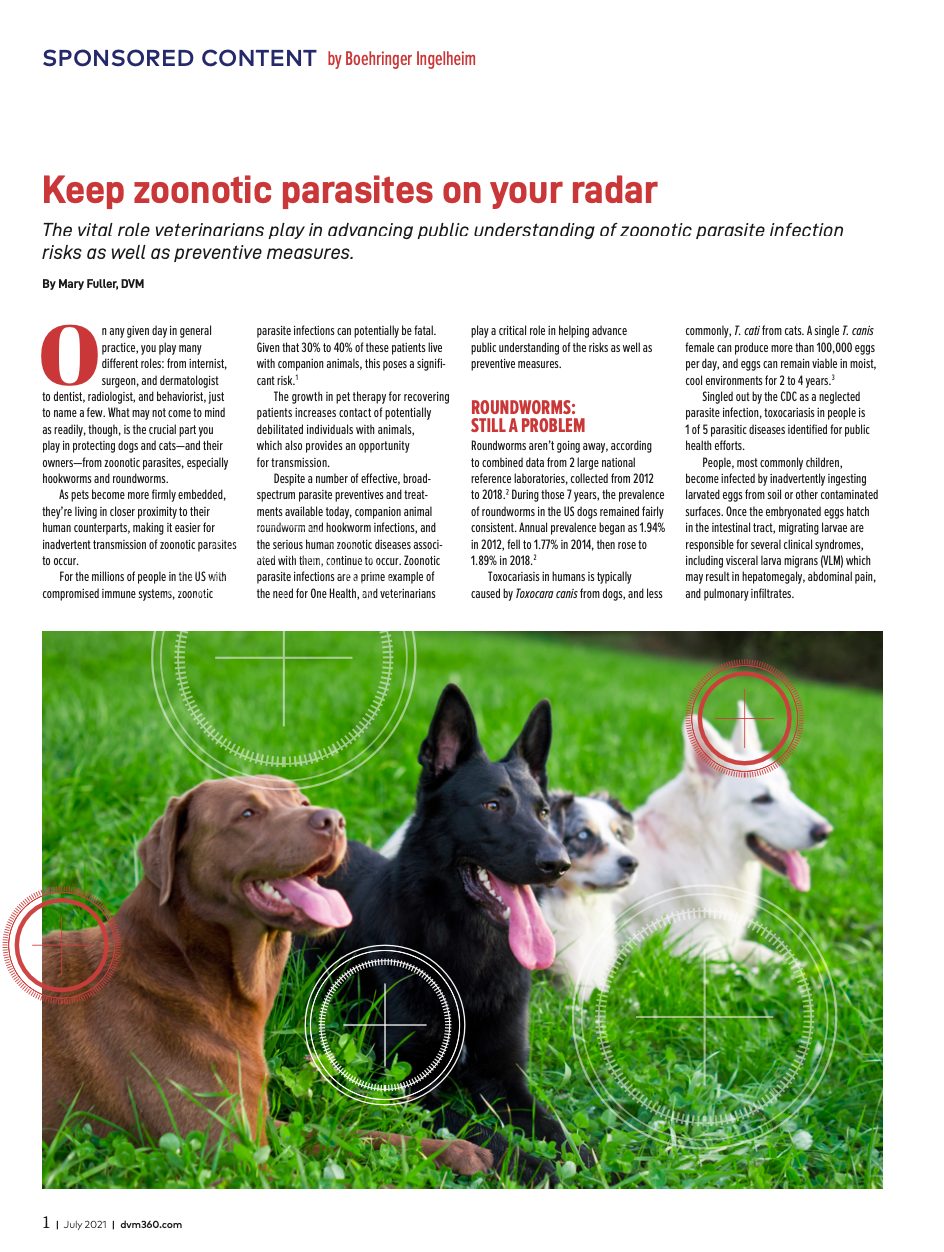On any given day in general practice, you play many different roles: from internist, surgeon, and dermatologist to dentist, radiologist, and behaviorist, just to name a few. What may not come to mind as readily, though, is the crucial part you play in protecting dogs and cats—and their owners—from zoonotic parasites, especially hookworms and roundworms.
As pets become more firmly embedded, they’re living in closer proximity to their human counterparts, making it easier for inadvertent transmission of zoonotic parasites to occur.
For the millions of people in the US with compromised immune systems, zoonotic parasite infections can potentially be fatal. Given that 30% to 40% of these patients live with companion animals, this poses a significant risk.1
The growth in pet therapy for recovering patients increases contact of potentially debilitated individuals with animals, which also provides an opportunity for transmission.
Despite a number of effective, broad-spectrum parasite preventives and treatments available today, companion animal roundworm and hookworm infections, and the serious human zoonotic diseases associated with them, continue to occur. Zoonotic parasite infections are a prime example of the need for One Health, and veterinarians play a critical role in helping advance public understanding of the risks as well as preventive measures.
Roundworms: Still a problem
Roundworms aren’t going away, according to combined data from 2 large national reference laboratories, collected from 2012 to 2018.2 During those 7 years, the prevalence of roundworms in the US dogs remained fairly consistent. Annual prevalence began as 1.94% in 2012, fell to 1.77% in 2014, then rose to 1.89% in 2018.2
Toxocariasis in humans is typically caused by Toxocara canis from dogs, and less commonly, T. cati from cats. A single T. canis female can produce more than 100,000 eggs per day, and eggs can remain viable in moist, cool environments for 2 to 4 years.3
Singled out by the CDC as a neglected parasite infection, toxocariasis in people is 1 of 5 parasitic diseases identified for public health efforts.
People, most commonly children, become infected by inadvertently ingesting larvated eggs from soil or other contaminated surfaces. Once the embryonated eggs hatch in the intestinal tract, migrating larvae are responsible for several clinical syndromes, including visceral larva migrans (VLM) which may result in hepatomegaly, abdominal pain, and pulmonary infiltrates.
For migrating larvae that happen to reach the eyes, ocular larva migrans (OLM) has the potential to cause permanent vision loss. Hundreds of children in the US are estimated to experience unilateral vision loss and other illnesses each year due to toxocaral larva migrans.4,5
Toxocariasis can also lead to neural larval migrans (NLM) causing progressive neurological signs and covert toxocariasis with abdominal pain, headaches and other vague symptoms.
Hookworms: Growing in importance
The prevalence of hookworms in US dogs increased from 2.02% in 2012 to 2.96% in 2018, a 47% jump over the previously reported annual prevalence (P < 0.0001).2







